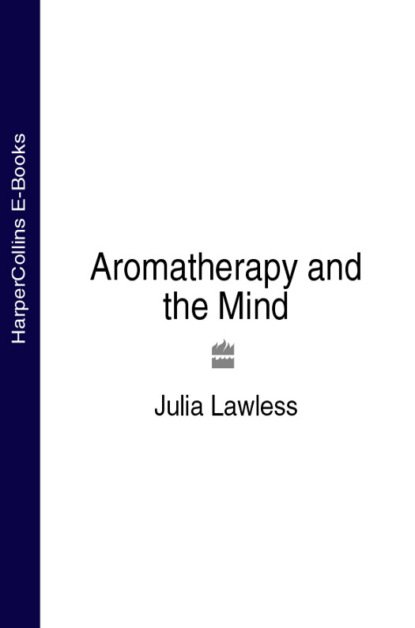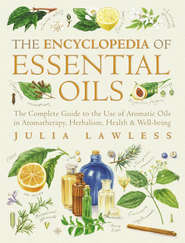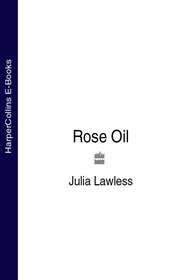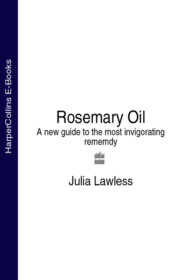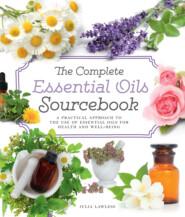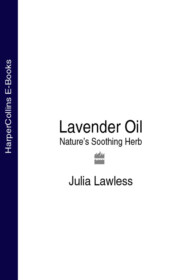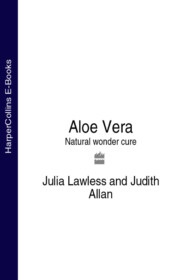По всем вопросам обращайтесь на: info@litportal.ru
(©) 2003-2024.
✖
Aromatherapy and the Mind
Настройки чтения
Размер шрифта
Высота строк
Поля
1) as an offering or bloodless sacrifice – a symbol of wealth
2) as a way of uplifting and altering one’s state of mind – to create the correct mood
3) as a means of ‘communion’ between the earthly and divine realm
4) as a protection against evil and to ensure favour
5) as a purifying agent for the psyche or soul of an individual
6) as a cleansing agent for physical body and the environment
7) as a pleasing perfume in meeting-places
But what is the basis for the universal employment of incense, in particular those ingredients derived from resins, woods and gums, as opposed to those from flowers, leaves or other sources? This was the question posed by the Syrian scholar Arnobius, in the fourth century AD. His scepticism undermines the whole concept underlying the ritual use of incense and could just as well be applied today:
What is this sign of respect which comes from the smell of the gum of a tree burning in a fire? Does this, do you suppose, give honour to the heavenly magnates? Or if their displeasure has been aroused at any time, is it really soothed and dissipated by incense smoke? But if it is smoke the gods want, why do you not offer them any kind of smoke? Or must it only be incense? If you answer that incense has a nice smell while other substances have not, tell me if the gods have nostrils, and can smell with them? But if the gods are incorporeal, odours and perfumes can have no effect at all upon them, since corporeal substances cannot affect incorporeal beings.
(#ulink_abfd87f0-e39a-5d89-825c-e05581219c83)
According to the psychologist Carl Jung, an important aspect in the development of individual consciousness may be understood as the process of withdrawing projections, i.e. the process of recognizing qualities previously ascribed to external factors as being potential aspects of oneself. Thus, the gods and goddesses of ancient mythologies or religions might in modern psychological language be seen as different archetypes or facets of the Self, rather than as separate external entities:
All ages before ours believed in gods in some form or other. Only an unparalleled impoverishment in symbolism could enable us to discover the gods as psychic factors, which is to say, as archetypes of the unconscious. No doubt this discovery is hardly credible yet.
(#ulink_c4818e15-df91-582c-a0fc-c48f7711aff4)
Seen in this context, the use and effect of incense may be described in terms of its physiological and psychological impact on the human psyche.
In his book The Scented Ape, zoologist Michael Stoddard compares the scent of incense materials and their molecular composition with the makeup and odour of steroidal sex pheromones found in the human species. He concludes:
Suffice it to say that the inspiration men get from incense is that it stimulates them in a truly profound manner, unconsciously stirring vestigial memory traces associated with times when odorous sex attractants played a vital role in the preservation of the species. There can be no odours more able to stimulate the deep emotional levels of the brain than those associated – however distantly and indistinctly – with sexual attraction.
(#ulink_e83e349c-3b47-552a-89ed-33df2810050d)
Viewed in this way, the scent of incense, reminiscent of sex attractant steroids, can help to lift conditioned repressive tendencies enough to release some of our deep-seated primitive emotions. Under the influence of incense, the rational mode of consciousness is diminished and the mind tends to become more alert and open to suggestion, and so it encourages a state where ‘all minds think alike’. In 1977, Hines, a psychologist who has studied the effects of odours on the right cerebral hemisphere of the brain, firmly stated that:
… odours are capable of inducing an ecstatic, emotional state of consciousness that would render individuals more susceptible to the sort of consciousness persuasion on which ritual and religious rites depend.
(#ulink_aa8e5e2f-495d-5597-814f-2c854e09c8d2)
Over the last decade a spate of research papers has been published on the psychological effects of odour and its potential uses. In addition, with the resurgence of interest in natural remedies and the growing concern for environmental issues which require a harmonious relationship with nature, the benefits of incense and aromatic materials are being reassessed. The burning or vaporization of natural gums, resins and essentials oils is already beginning to undergo a revival both at home and in society at large. Unlike synthetic air-fresheners, essential oils can be employed not only as antibacterial agents or to produce a pleasant smell, but also to reduce stress, aid relaxation, induce sleep, uplift and clear the mind or act as aphrodisiacs or euphorics. In their more traditional role, they can also help create a personal bridge to the sacred – through meditation, prayer, yoga, visualization or active imagination. As early as 1580, Montaigne, the prolific French writer, observed in his Essay on Smells:
Physicians might … make greater use of scents than they do, for I have often noticed that they cause changes in me, and act on my spirits … which makes me agree with the theory that the introduction of incense and perfume into the churches … was for the purpose of raising our spirits, and of exciting and purifying our senses, the better to fit us for contemplation.
(#ulink_b9155860-6d42-56ca-b50d-ee2ffb151845)
The full potential of incense and aromatics in modern day rituals has yet to be fully explored!
Incense Table
The following botanical species are the most commonly used sources of incense:
Bark
borneol or Chinese camphor (Dryobalanops aromatica)
camphor (Cinnamomum camphora)
cassia (C. cassia)
cinnamon (C. zeylanicum)
Pollen
saffron (Crocus sativa)
Resins
balsam of Peru (Myroxylon pereirae)
balsam of tolu (M. toluiferum)
dragon’s blood (Calamus draco)
elemi (Caanarium luzonicum)
frankincense (Boswellia sacra, B. carterii, etc)
galbanum (Ferula galbanifula)
ladanum (Cistus ladaniferus)
myrrh (Commiphora myrrha)
rose malloes (Liquidamber altungia)
styrax (Styrax officinalis, Liquidamber orientalis)
tragacanth (Astragalus gummifer)
Roots/Rhizomes
calamus (Acorus calamus)
costus (Auklandia costus)
spikenard (Nardostachys jatamansi)
Seed Coat





